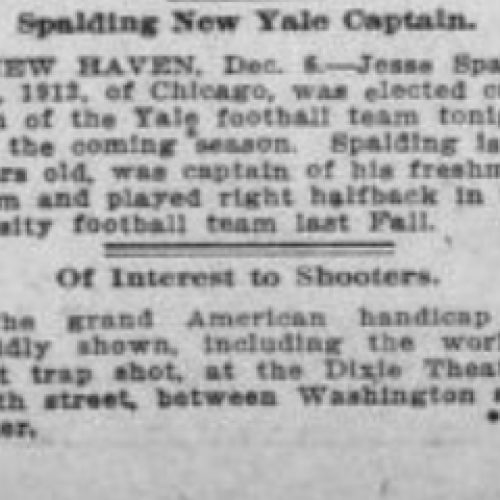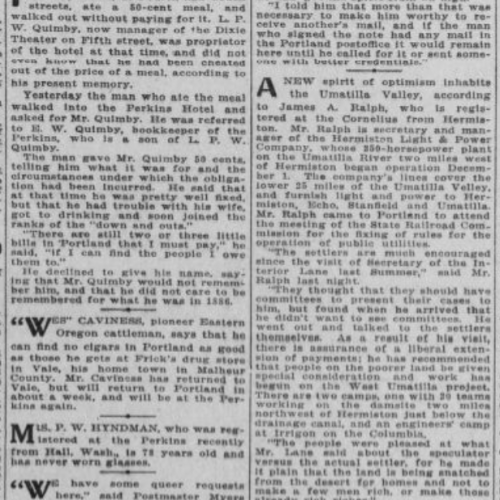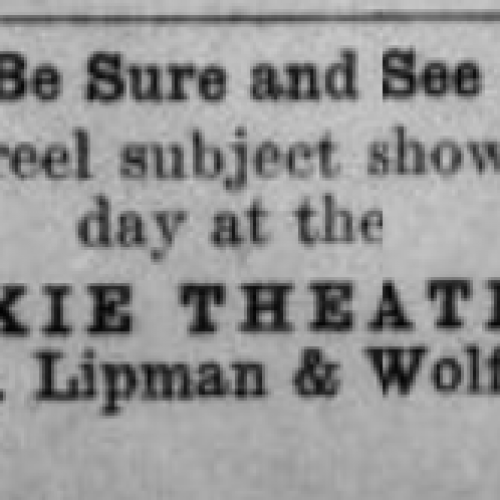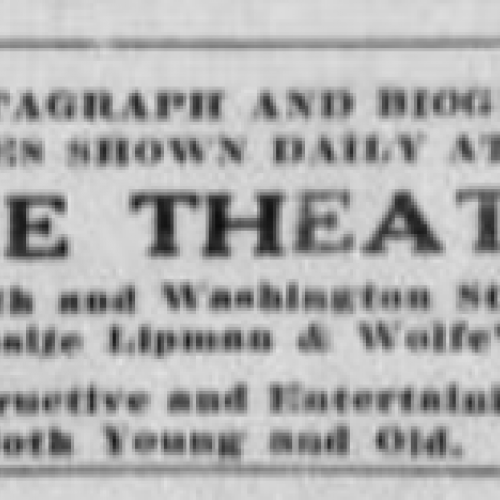It is clear that the Dixie showcases more than just films in the theater. According to the Morning Oregonian from December 07, 1911, “the grand American handicap” was shown, “including the world’s best trap shot.” Because that section of the article was titled “Of Interest to Shooters,” I am assuming the target audience for the particular films and events at the theater were specific and only targeted shooters. The advertising and promotion were clear to the people reading the newspapers, allowing one to know if they would be of interest to go to that theater. According to the Morning Oregonian from January 21, 1914, the manager of the Dixie Theater was L.P. Quimby.
In the Morning Oregonian from April 21, 1913, the advertising is once again very clear to the people engaged with the newspaper. “Dixie Theater” is in bold letters and bigger font than the words surrounding it in order to catch people’s attention, specifically with people interested in entertainment. The target audience are people of all age as the article states “...entertaining to both young and old.”
The Morning Oregonian from April 21, 1912 includes an advertisement for Dixie Theater specifically telling people not to miss a “2-reel subject shown.” From the advertisements I have seen, The Dixie theater places clear emphasis on what they can provide in terms of entertainment for their audiences. The advertisement also includes “Opp. Lipman & Wolfe’s.” Based on the location described in the National Register of Historic Places Registration Form, the Lipman & Wolfe building in Portland, Oregon was a “ten-story Commercial style building of steel skeleton frame construction…” and was the location of the Dixie Theater.



